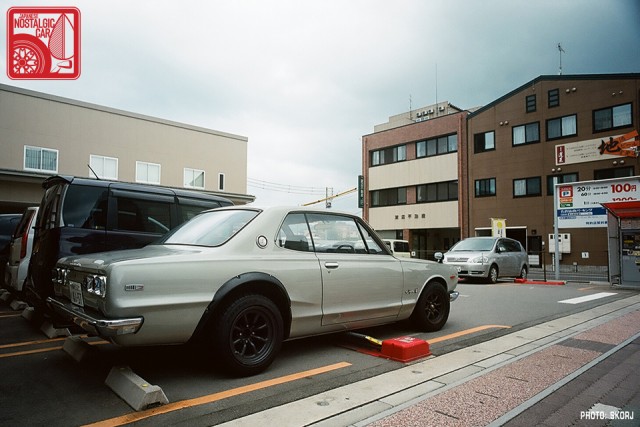30
2015REPORTAJE JDM 001: ¿Como aparcar tu coche en Japón? Parte 1
Finding public or street parking in Japan’s major cities is sometimes chotto muzukashii — a Japanese saying for “a little difficult,” said through clenched teeth with a trailing “iiiii…” it essentially means, with typical Japanese subtlety, impossible. So there is naturally a range of inventive, complicated, and sometimes expensive options to parking your car in public.

The first step is to recognize when proper public parking is needed, instead of just parking roadside as you would perhaps outside of Japan. To demonstrate, we’ve chosen a tasty Suzuki Fronte to show an illegal street park as a Subaru Legacy looks on disapprovingly.
Wearing some of the coolest fender mirrors ever fitted to a car, the blue Fronte here is parked illegally due to its relationship with the white line, which marks the pedestrian walkway. It is effectively parked on the sidewalk. The drilled-for-lightness mirrors though, do provide a good location for the police to secure their yellow, plastic-coated, stainless steel cable with parking ticket helpfully sealed in water-tight bag.
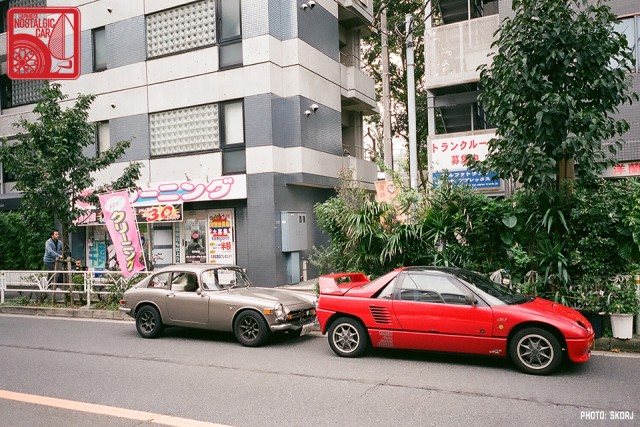
This Honda S800 and Autozam AZ-1 are also both parked illegally. Though not on the sidewalk, there are no marked spaces to occupy. Ticketing will surely follow if they remain here for more than their coffee pick-up time.
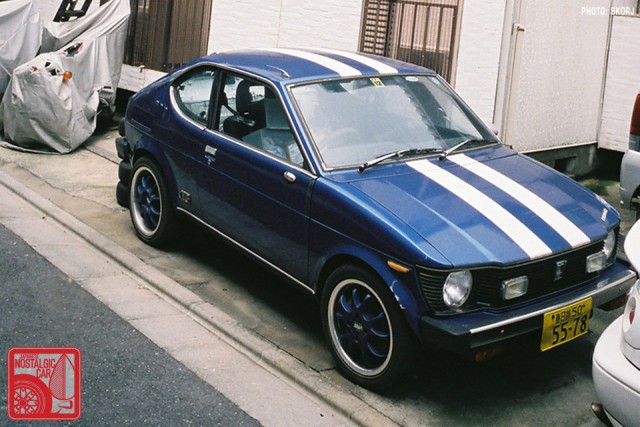
The rally-striped Fronte here however, is parked legally. Though just off the road, it is on private property and thus not subject to policing. Note too that being a kei, it does not need to have a registered car space tagged to its license plate, unlike normal-sized cars.
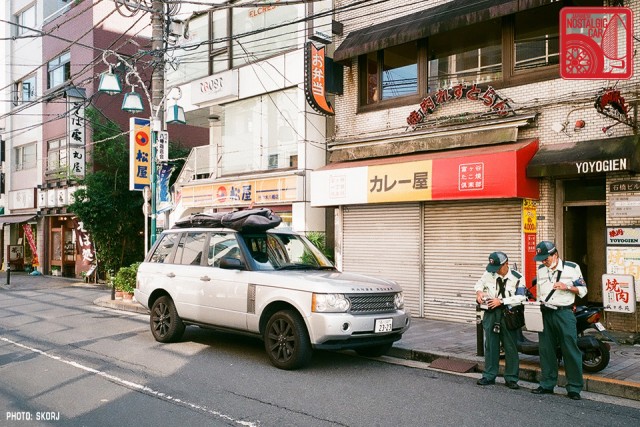
A few years ago, most Japanese wards recognized that ticketing cars wasn’t the most effective use of police time, so they licensed private contractors to travel in pairs on bicycles and on foot to ticket illegally parked cars.
The police still issue tickets for fun, entertainment, and revenue though, so, do not assume because the green-uniformed parking inspectors have passed, the police will not swoop in their absence. Here, a Range Rover in my local shotengai receives the receipt-like ticket from the men in green and their on-line portable fining and revenue generation machine.
Now that you know when you need proper parking, here’s some assistance navigating the options available for public parking. The following is a brief overview and partial explanation of some of the commonly found options in Japan. Your millage may vary.
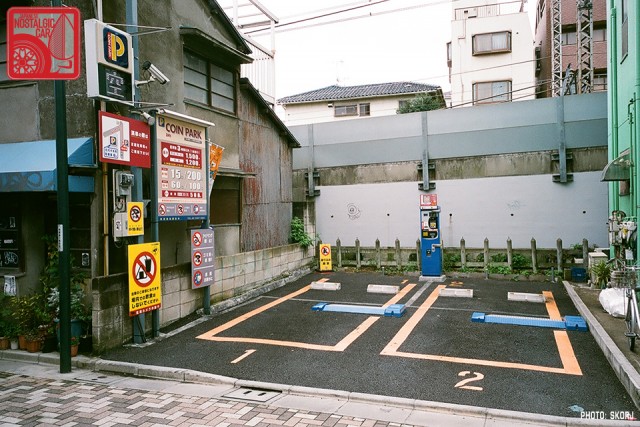
1. The Steel Bar Coin Park
Perhaps the most common type of available legal parking in Japan is called “coin parking,” supposedly due to mere coins being needed to secure a spot safe from the police and parking inspectors.
A coin park is essentially a vacant lot with some special hardware deployed to assist revenue collection. With space available for car parking at a premium in most major Japanese cities, the government encourages land owners to suspend their property development for a minimum of one year to operate a car park with one simple statute — all materials used to build on the lot (after operating a car park for 12 months) are exempt from the 8 percent national sales tax.
While many land owners take this to the day, paving, installing the necessary hardware, then ripping it all up again after one year, many land owners simply leave the infra in place and continue to earn from the simple car park revenues. In some areas, this earning can be quite considerable.
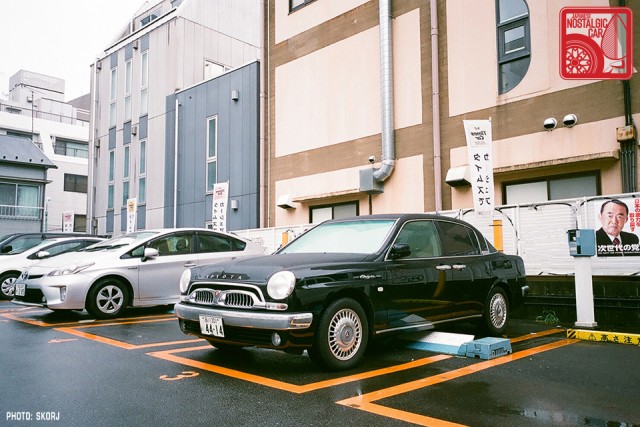
The rates for coin parking vary depending on location and time of day. A prime location (downtown Ginza), will be more expensive than a rural community (Saitama), as you would expect. Time-of-day generally triggers a day rate, and a night rate. Night rates are usually cheaper than day rates.
A typical day rate might be from 100円 (about one dollar) or 500円 for 20 to 30 minutes, and a night rate of 100円 for 30 to 120 minutes. Recently too, likely due to user complaints, car park operators have been posting maximums for 24 hour rates of 1000円 to 5000円 or similar.


The infrastructure needed to operate a coin park consist of two simple lumps of steel — one that rises up under, or in front of your car after you park, and another in which to deposit coins to make the first piece of steel lower itself. This allows you can drive away without ripping off your exhaust system.
You are typically given three minutes to park in your chosen spot properly and retract your mirrors, before the very low-geared bar slowly rises with a faint electric whir. A position sensor then clicks, lowers the bar a few millimeters, and then locks it place not touching your car. Cars with soft under-bellies, plastic side skirts or similar have no fear of contact damage due to the low gearing and auto-stop function.
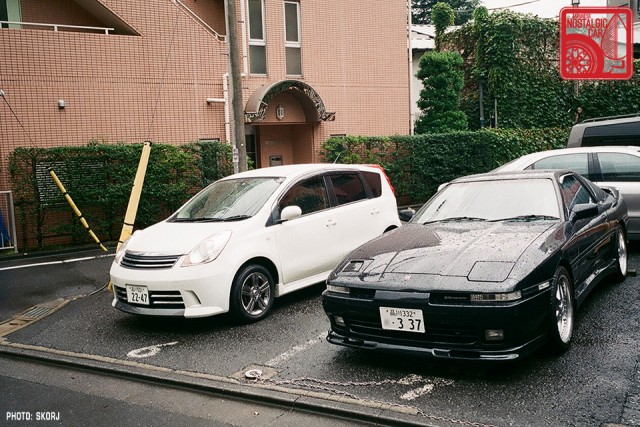
Of course, everyone parks the Japanese way. It is safer to park rear-in, ensuring reversing errors occur only within the confines of the car spot, and not in the open area with moving cars or people. This also works well with the standard hazard flasher signaling routine in congested parking areas, as pulling out with someone waiting to use the same spot does not require you to both need the same piece of road simultaneously.
Trying to abscond without payment is of course a possibility in bar coin parking under a number of scenarios. You can try and crash the bar, and as it is facing like a barbed arrow it makes an enormous noise and an even greater mess of your under-car dangly bits. I’ve seen a few drivers forget and try to drive off, and though a slow pull away from the spot normally results in just a horrible noise and perhaps only slight damage, an at-speed attempt would nearly certainly incapacitate a conventional car.
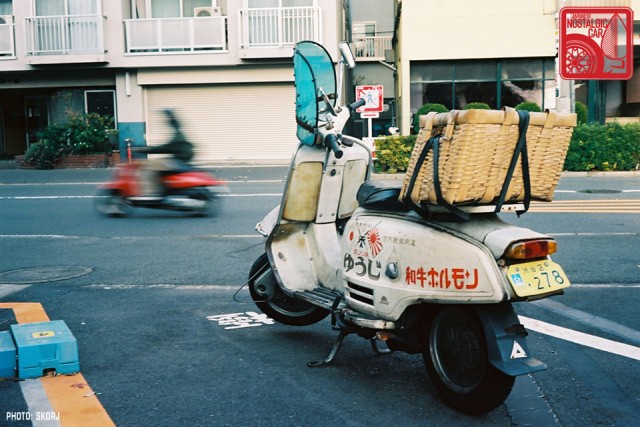
Absconding on a motorcycle parked in a bar coin park, though would be easier, but with the spots usually monitored by CCTV, a license plate check would certainly catch you. However, some coin parks provide free spaces for two-wheeled vehicles, like the one used by this Fuji (Subaru) Rabbit.
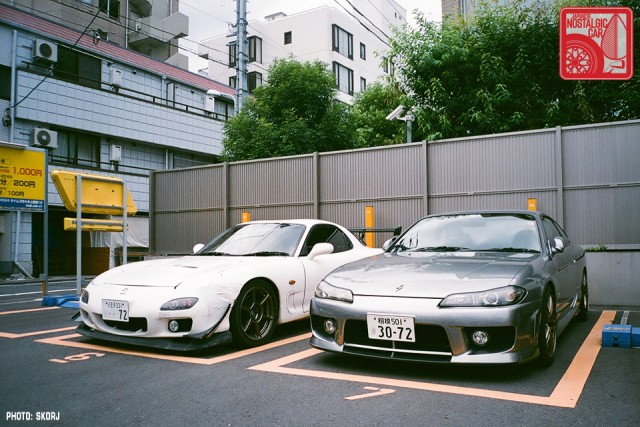
In some high-traffic areas, a few coin parks have been set up without the bar, simply based on the honor system of taking a ticket, parking in a nominated spot, and paying the fee on departure. Again, a CCTV camera is present to put your license plate on the ticket accordingly.
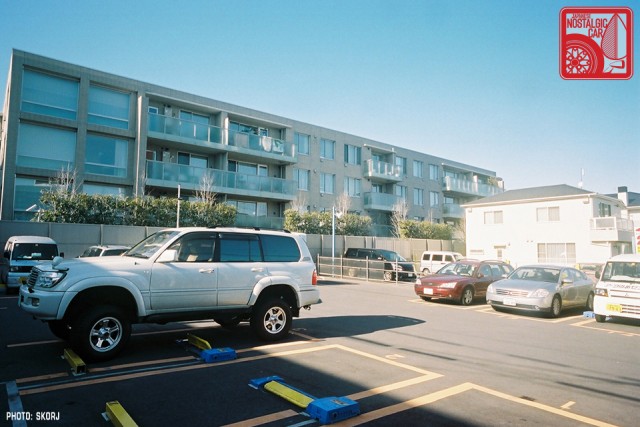
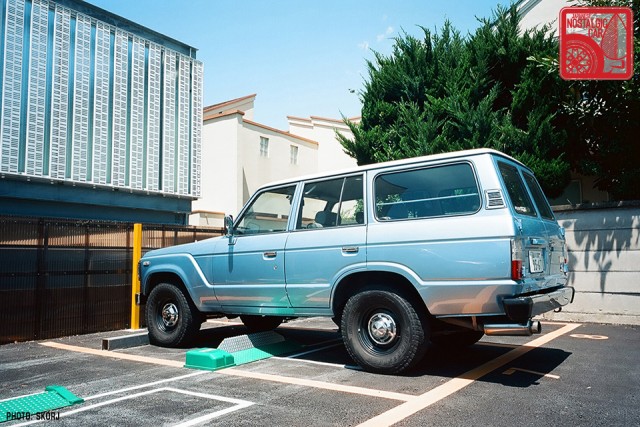
Another absconding method would be to have a car that could simply drive over the bar. For these wrong-way-facing Land Cruisers, the bar provides as difficult an obstacle as an empty Boss Coffee can. A Japanese however, would never contemplate this.

Don’t own a car, and feel like you’re missing out on the novelty of navigating Japan’s car parking options? No problem! In the land of convenience, a number of specially nominated coin parks have cars you can drive away in too, returning them when you’ve finished. Here, a Nissan Note is available from the Times Car company for rental — simply move Times Car’s yellow pylon, and after unlocking the specially-equipped car with your Times Card, you drive away.

For the kyuusha fan, Times even rents a number of classic cars — this G-nose Z spotted at Daikoku Futo a few months ago was one of their rentals. The scofflaw-minded among you may consider parking in the Times Car spot, which does not have a bar, once the rental car is gone. Again, a local would never contemplate this.
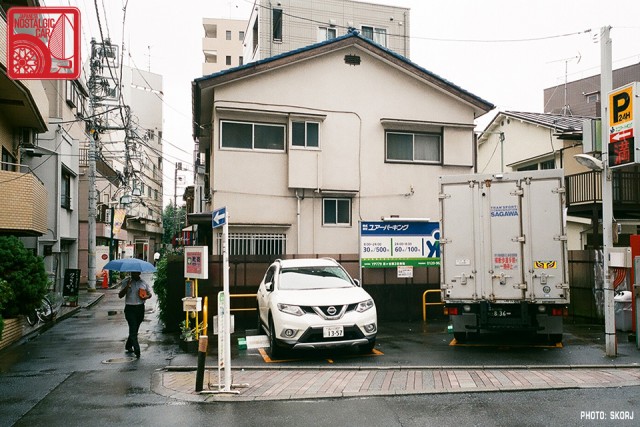
Some restaurants, shops, and department stores provide either service (free) tickets, or subsidized parking at either their own or privately operated parking areas. The service ticket is then used as you exit.
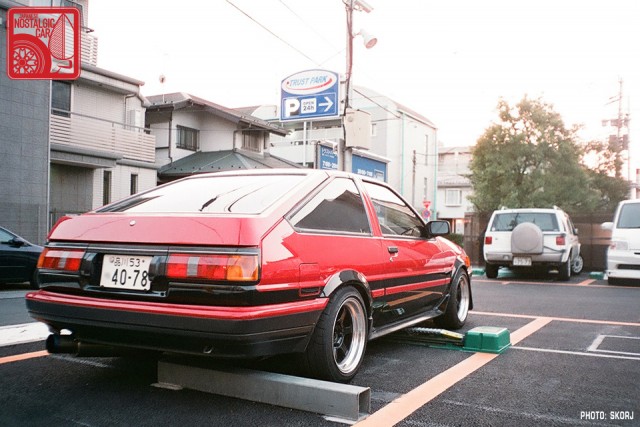
To leave a bar coin park without a service ticket though, you simply enter your spot number in the electronic pay box, which then provides you the excitement of waiting to see what vast number of coins will be needed to free your car from the self-imposed prison you have decided to use.
If you’re lucky enough to have your wallet, coin purse, companion, and that passing salaryman summon a small ransom in coins for the machine, the bar repeats its slow whirring in the opposite direction and, voilá, you are free!
La semana que viene la segunda parte, estad atentos. Fuente: JNC


